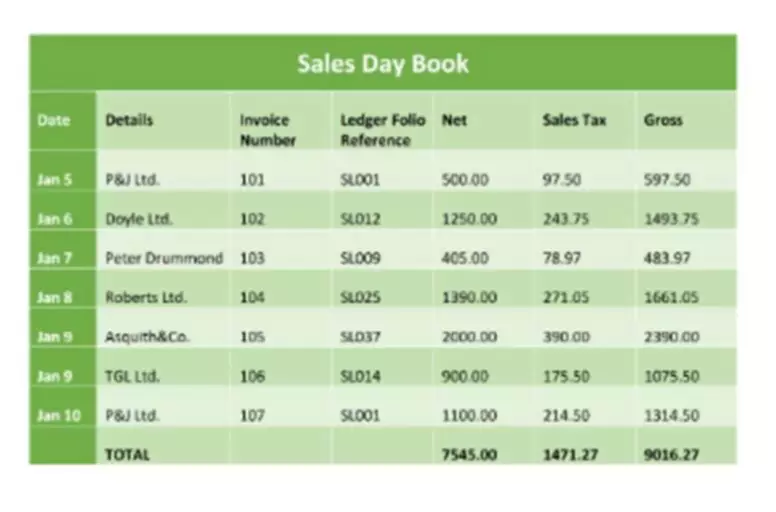Content

They are an advance payment for the business and therefore treated as an asset. The accounting rule applied is to debit the increase in assets” and “credit the decrease in expense” (modern rules of accounting). More than likely, your accountant will make this adjusting entry for you, or your accountant may be able to provide you with a schedule showing the amount of depreciation for each asset for each year. Doing so records the incurring of the expense for the period and reduces the prepaid asset by the corresponding amount.
Hence, it is first recorded as an asset on the company’s balance sheet because it has the potential, like other assets, of bringing future benefits to the company. This future benefit is in the form of the insurance coverage that the company gets for the period covered by the prepayment. The payment gets expensed when the benefits have been realized by the company based on the matching principle. Accounting for prepaid expenses involves recognizing and recording advance payments made by a company for goods or services that have not yet been received or utilized. The primary objective of accounting for prepaid expenses is to accurately reflect the financial position of the business and ensure that expenses are recognized in the appropriate accounting period.
Correcting Journal Entries
At the end of each month, an adjusting entry of $400 will be recorded to debit Insurance Expense and credit Prepaid Insurance. The amount of time a prepaid expense is reported as an asset should correspond with how long the payment will provide a benefit to the organization, usually up to 12 months. The payment of expense in advance increases one asset (prepaid or unexpired expense) and decreases another asset (cash).
- On the balance sheet, prepaid expenses are first recorded as an asset.
- We’re firm believers in the Golden Rule, which is why editorial opinions are ours alone and have not been previously reviewed, approved, or endorsed by included advertisers.
- Prepaid expenses are treated as assets on a company’s balance sheet, as they represent future economic benefits.
- The initial entry is a debit of $12,000 to the prepaid insurance (asset) account, and a credit of $12,000 to the cash (asset) account.
- BlackLine solutions address the traditional manual processes that are performed by accountants outside the ERP, often in spreadsheets.
- For example, when a business pre-pays for rent, it initially records the payment as a prepaid rent asset.
Someone on our team will connect you with a financial professional in our network holding the correct designation and expertise. Upgrading to a paid membership gives you access to our extensive collection of plug-and-play Templates designed to power your performance—as prepaid insurance journal entry adjustments well as CFI’s full course catalog and accredited Certification Programs. The landlord requires that Company A pays the annual amount ($120,000) upfront at the beginning of the year. Get up and running with free payroll setup, and enjoy free expert support.
Accrued expenses
BlackLine’s foundation for modern accounting creates a streamlined and automated close. We’re dedicated to delivering the most value in the shortest amount of time, equipping you to not only control close chaos, but also foster F&A excellence. The path from traditional to modern accounting is different for every organization. BlackLine’s Modern Accounting Playbook delivers a proven-practices approach to help you identify and prioritize your organization’s critical accounting gaps and map out an achievable path to success. Centralize, streamline, and automate end-to-end intercompany operations with global billing, payment, and automated reconciliation capabilities that provide speed and accuracy. Ignite staff efficiency and advance your business to more profitable growth.

A business buys one year of general liability insurance in advance, for $12,000. The initial entry is a debit of $12,000 to the prepaid insurance (asset) account, and a credit of $12,000 to the cash (asset) account. In each successive month for the next twelve months, there should be a journal entry that debits the insurance expense account and credits the prepaid expenses (asset) account. However, if in case the company pays for more than a year, then the prepaid expense will no longer be a part of the current asset.
What is the Effect of Prepaid Expenses on Financial Statements?
Clearly, no insurance company would sell insurance that covers an unfortunate event after the fact, so insurance expenses must be prepaid by businesses. BlackLine Account Reconciliations, a full account reconciliation solution, has a prepaid amortization template to automate the process of accounting for prepaid expenses. It stores a schedule of payments for amortizable items and establishes a monthly schedule of the expenses that should be entered over the life of the prepaid items. By making this journal entry, the company will be able to record the insurance expense which has been incurred already and the part of prepaid insurance which has now already expired.
Is there any other context you can provide?
Consulting with a CPA or financial analyst can also provide guidance and support in properly recording prepaid expenses. Prepaid expenses refer to expenses that a business pays in advance before they are actually incurred. In accounting, you might want to record a prepaid expense as a prepaid asset on the balance sheet until it’s used or consumed. Are the amount of the expenses of which has been paid in advance by one person to another, but the benefit of the same is not yet received. The benefits of such expenses are to be utilized by the person on the future date.
- Centralize, streamline, and automate end-to-end intercompany operations with global billing, payment, and automated reconciliation capabilities that provide speed and accuracy.
- They also impact the accuracy of financial reporting, as they can affect the balance sheet and income statement.
- Explore the future of accounting over a cup of coffee with our curated collection of white papers and ebooks written to help you consider how you will transform your people, process, and technology.
- However, if the expenses are not debited within a year, the asset gets recorded as a long-term non-current asset.
- Maximize working capital with the only unified platform for collecting cash, providing credit, and understanding cash flow.

Recent Comments